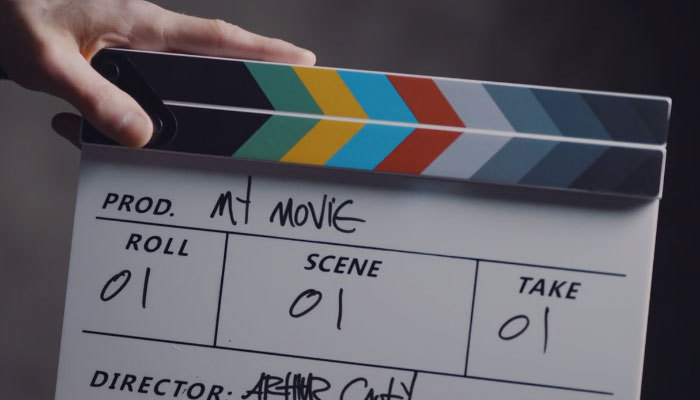Today on Art of the Cut, we speak with Lucy Donaldson, the editor of Kenneth Branagh’s latest film, A Haunting in Venice. Lucy’s feature film work includes Unspoken, Breaking News in Yuba County, Ma, Stuck, and Choice.
Art of the Cut: A Haunting in Venice
Tell me a little bit about how you got involved in this project. How did you and Kenneth find each other?It happened in the way that it never does — but people think it should — it came to me via my agent. My agent sent me an NDA and then told me who the director was and my jaw was quite slack when I found that out and obviously very excited. I've always loved Ken's films and of course, Agatha Christie. I, like everybody else, grew up with the films and the books, and it was extremely exciting. So the first time I met him was on Zoom for the interview when we were talking about the script.
Did you read the book before you either had the interview or did the movie?I purposefully didn't read the book or see any of the other productions until after I'd finished, because I knew there had been quite a lot of detours from the book, and it was a very complicated script and I didn't want just a piece of information in there that would muddy the waters. Normally I do all the preparation that I can, but that was a conscious decision. I think it was the right one because there were a lot of pieces that I had to kind of keep together and make sure that I was very clear on, especially for the interview. I wanted to be very confident in who the characters were and what the plot was before I could talk more about tone and approach and influences.
It's like a 50/50 split of editors between whether you do the research or you don't — and as you said — it might depend on the project.I like to be as prepared as I possibly can, especially with a meeting like that. I feel very uncomfortable winging it. And the same with dailies. I'm really methodical about watching everything. Unless it's impossible, unless we're under a time constraint, which makes it impossible. I feel uncomfortable without having seen everything and prepared everything. That's very much my personality. I like to write lists. I like to know what's coming up, what I've got to do. And it's certainly how I work in my cutting room. I have one wall with my scene cards and another wall with my calendar because I feel if I've got the practicalities set, that frees me up to be creative. I don't work well in chaos. I can do it. Sometimes it's stimulating, but I don't like it.
You mentioned the scene cards. Did things structurally change much or did those scene cards just help you keep on track?I like to have scene cards. I find them — sounds very nerdy — I like just to look at them so I feel I can see the film in one. It didn't change as much as some films that I've worked on, but of course there were scenes that moved around and a few lifts, not many, but that's the way my brain works, so I always work with scene cards.
Did you find there was a lot of compression in the first act as usually happens?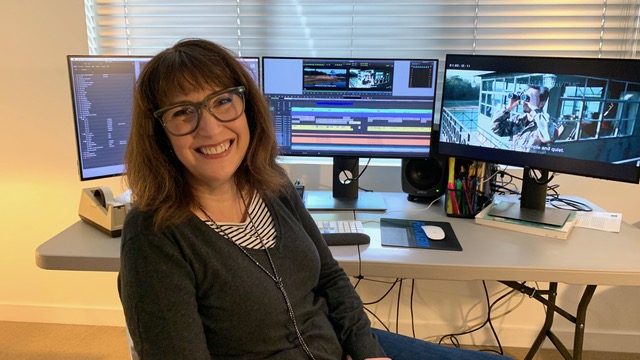 Editor Lucy Donaldson
Editor Lucy Donaldson
Yeah, there were a lot of scenes that were much longer setting up the environment, setting up the characters. We've got a party in our first act where there was a lot of good material and it was montage-y, so it was a lot longer initially. And then after we'd done the first preview, it reduced again, which is the usual way to have people say, “it was slow at the beginning.” So it's really that balance of making it nifty — getting the information that you need — without it dragging or without it being convoluted or missing key information. And we did quite a lot of work on the Ariadne Oliver character because she's a fast talker and there was there was a lot of dialogue in that scene where she's basically roping Poirot into her plan for him. And so we cut it right back and then we ended up putting more in and having a couple of ADR lines so we can really be: “This is who she is. This is what she wants from him.” and have the salient points there. So yes, there definitely was a trimming of the first act.
It's almost like focusing a camera. You've gone too far in one direction, so you pull back and you go the other direction.Right. And Ken was ruthless about lifting things. He's very courageous in that way.
Did it seem like a lot of the compression was about “how quickly can we get to the seance?” Was that the big first thing that you needed to get to? Was it just getting to the Palazzo?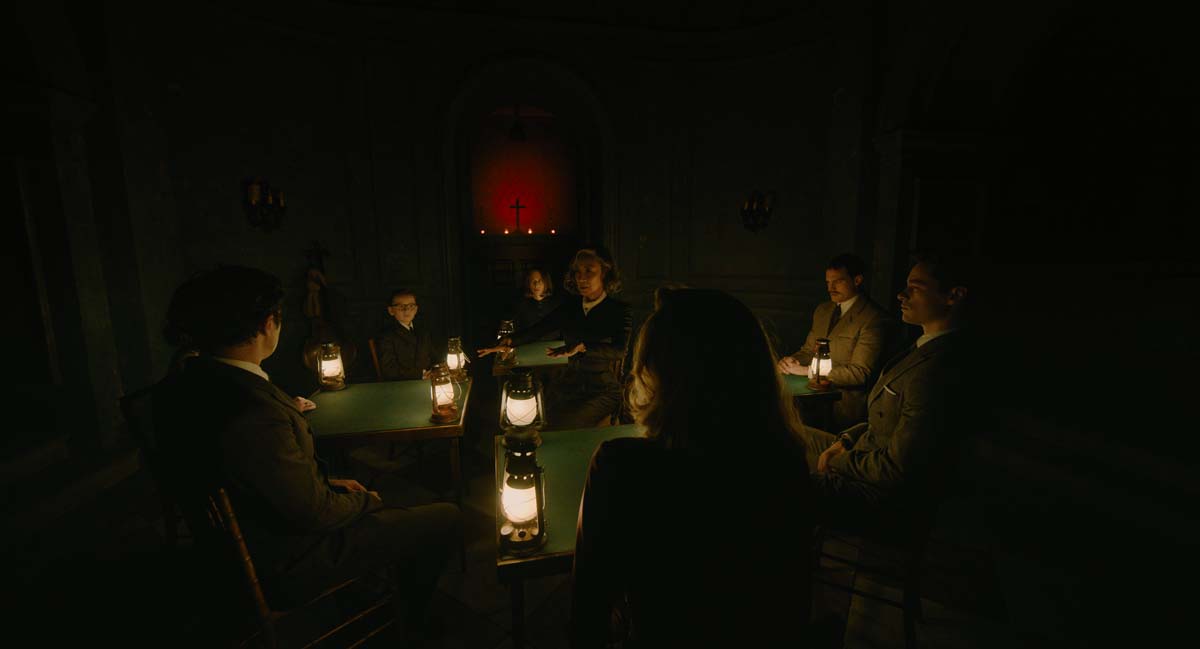
It was getting into the palazzo and then getting to the murder. Certainly with Agatha Christie, there are a lot of expectations and a structure. Certainly getting to the Palazzo, but we wanted to set Venice up as well as it's Venice, but not as you know it. And also set up that Poirot is in a different space than the previous Poirot. He's more somber. It's postwar. He has more self doubt. He's not the showy show-off Poirot that we'd met before. And so it was important to show that through his self-soothing daily routine, Poirot is not okay, basically. So we didn't want to rush that because once we're in the Palazzo, we're pretty much trapped in the Palazzo. We do pop out for a few times for emphasis, but having the closed doors and being a unity of time and space I think is very effective, but we didn't want to sell ourselves short at the beginning either. It really was a balancing act and we did a lot of work on the first two reels to try to get that right.
Some of the compositions were very interesting — the camera compositions — did that make it tricky to edit just because of eye lines and that kind of stuff? Or did you just treat it like any other coverage?There were some tricky moments with eye lines. Hopefully that doesn't show.
No, no, no, no. I'm just curious because the compositions are pretty radical. Somebody composed very far off to one side of the screen looking in a direction you don't expect them to look.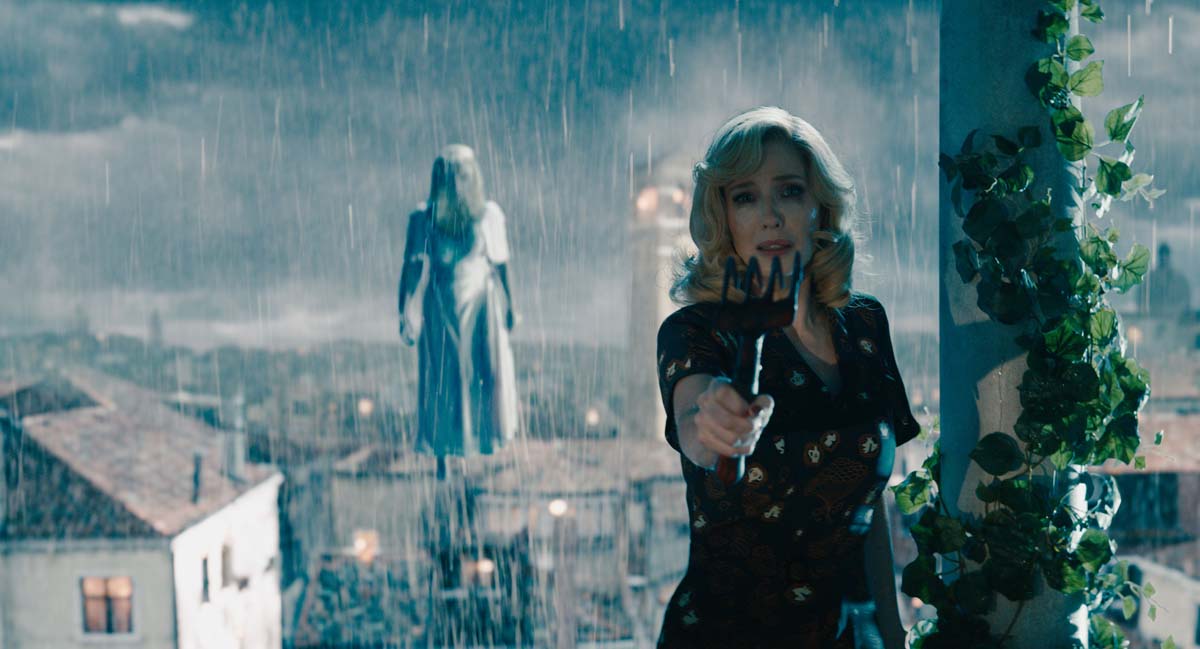
Yes, Yes. And there were lots of decisions made during pre-production about having the film make people feel slightly off, uncomfortable, slightly off kilter. There are very few camera moves, so one of the things we talked about at the beginning was that the pacing and the rhythm would come through the cut. But there are some — there's that big camera move when Poirot is walking through the main hall of the Palazzo and the camera does a 360. And when I got those dailies, I wasn’t sure what to do with it, but it was actually very simple. He had in his mind's eye how he wanted to come out of it, and it worked a treat and it was an extraordinarily well planned shoot. And I think because he was acting and directing, he really does a very thorough pre-production. So when he's on set, he's just with the character and with the other actors. So a lot of it came together really well.
But of course, there are always instances where we cut out a line where someone's moving or for whatever reason there was a challenge and there was a scene that I felt very pleased with myself because I'd flopped 4 or 5 shots and to my eye it was seamless and I thought, “No one is ever going to know.” One of the actor's decisions was that after one line they wanted to move forward to a different mark and I think they were up against it with time, so for the second half of that scene, I didn't feel that the eye lines particularly worked, so I flopped a lot of shots and then Wakana Yoshidara, the hair and makeup Head of Department, found that to be not ideal, so I had to unflop them all and I thought, “Rats!” So yes, that didn't happen a lot, but they're the fun problems to solve.
Often between scenes and to show passages of time there were very cool exteriors and interior details shots. Were those all in separate bins instead of in scene bins? And you just would think, “Oh, I need a cool detail shot or I need an exterior.” How was that organized and how did you find those shots? Think about them. Keep them in your brain. “Oh, that'll be good for this.”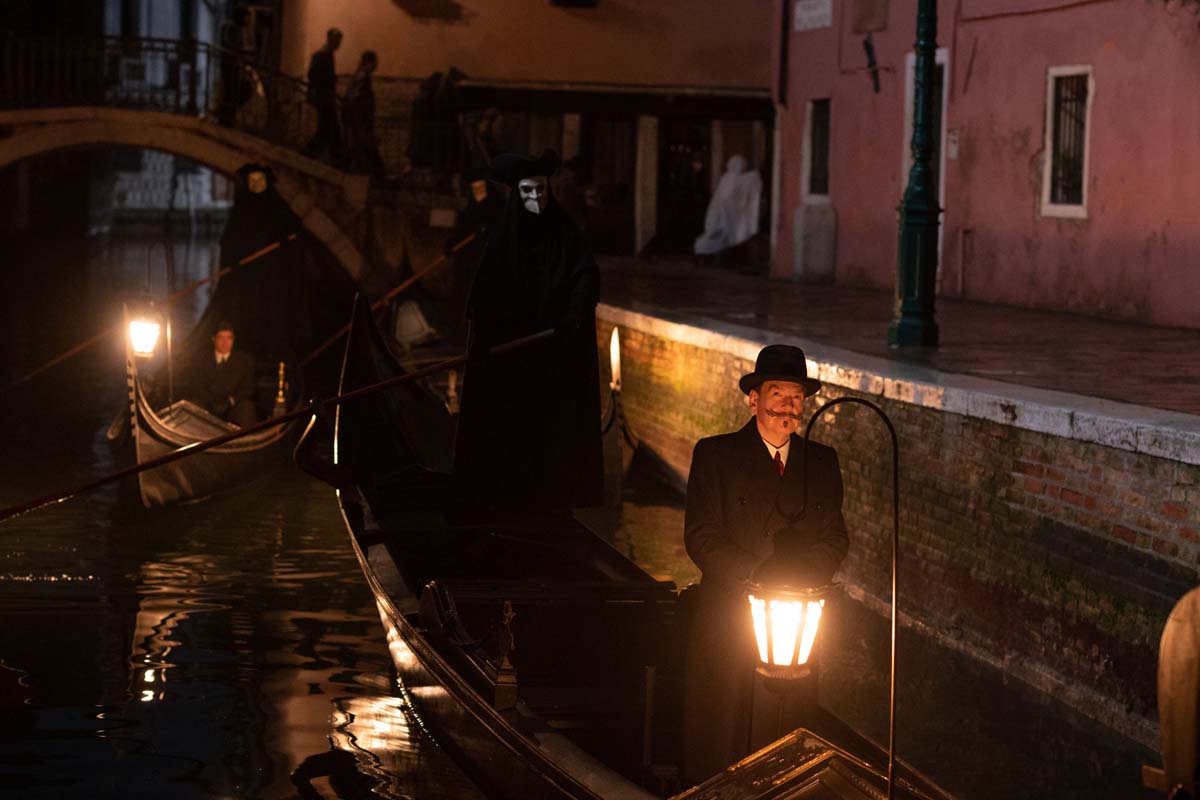
Yeah, it wasn't easy because there were quite a few options and different sorts of options. So I did. I had a bin of atmospheres and that was something that we talked about at the beginning to build an atmosphere in the Palazzo that suggested that this house is breathing, that this house is whispering, that there are things going on behind doors. Are they human, are they not human? To really have that fun and interesting atmosphere. So we talked about having just shots of closed doors, which would suggest “what's behind the door” without answering it. So that sort of idea. And then there were the exteriors. But I really like the unusual shots. And the idea is, this Palazzo has been around a long time and many lives have been lived in it and that it has its own personality. So, not the easiest thing to manage, I have to say, but I definitely did have a bin of favorites that I would pull from. And they're usually the things like, “Oh, we need to get some time out” and then they come out and then it's “Oh, but there's that real gem, let's put that in over here.” And also we had Harry, who's one of my favorite characters: he's the cockatoo. Harry's watchful eye. I enjoyed going to that at certain moments. And also we pulled moments from scenes that weren't necessarily intended for that.
Going out to the exteriors of the Palazzo: there was some shot at Pinewood. The lower story was built at Pinewood: the exterior. And then there was also a model shoot, and it was quite a big model. I don't know what the scale is, but they did a few days of exteriors of the model, and then there was the real building in Venice. So we were trying to make those three elements as seamless as possible.
Ken wanted to use more classic filmmaking techniques for this film, and I think that fits in with the sort of style of the film that it was. So there were fewer visual effects than there might have been, and that was a conscious choice to do as much practically as possible.
The seance where she types on the typewriter. I love the rhythm. It's kind of a jumpscare and it's got a wonderful rhythm of a couple quick cuts as she executes this first medium trick. Can you talk about crafting that?
It's one of my favorite scenes too, and the brief that I got from Ken was at the beginning to have it as jagged and uncomfortable as possible and to be with the characters as if the audience was in the séance too. So they've all come in with their various dysfunctions, and at this point they're getting a bit freaked out. So it was to have that jagged, jumpy feeling as if we were there. So the first time that I cut it, there was a great shot, which was handheld — unusually — going around the participants, and Ken said, “No, I want to be in the table with the attendees.”
The typewriter was obviously a gift for sound and imagery as well. I got a really nice bin full of the most unusual typewriter angles ever committed to film. So we had a lot of choices. And again, the idea was not to have a nice, easy rhythm, but to have unusual shot choices, unusual rhythms, as if you're looking around a room and you don't know what you’re meant to be looking at, and obviously Poirot is doing exactly that and he's looking for evidence of why she's a sham. So that was a really fun scene to cut, and I was helped admirably by my additional editor, Alex Fenn, who did some really good work on it.
At the beginning we had this kind of odd, almost abstract feel for the setup and the beginning of the séance. Then there's the interruption in the middle by Poirot, and then the pace really takes off to a crescendo. So it was a lot of fun, but it was quite challenging in that there was a lot of coverage needed and so we were really stealing glances and moments, particularly towards the end, to really keep the momentum going. But from the day that the dailies came in, it was one of my favorite scenes.
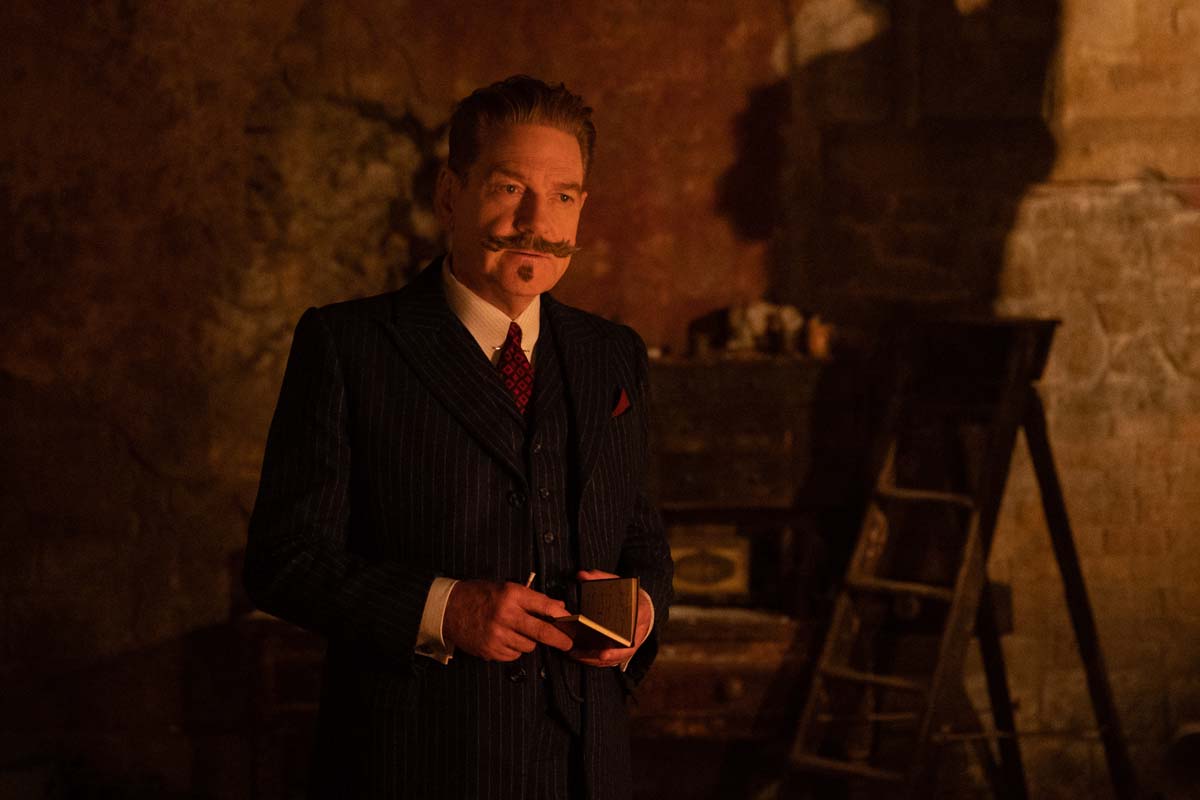 Is there anything that you do to prepare or to organize so that when you sit with a director for notes that you're able to deliver options to them quickly or help them revise what you've done?
Is there anything that you do to prepare or to organize so that when you sit with a director for notes that you're able to deliver options to them quickly or help them revise what you've done?
Most of the time I would pre-prepare an alt if there was something — for example — if he'd asked to see something a certain way and I'd had another idea, I would present what he'd asked for first and then I would suggest, “I did another alt if you want to see it.” Most of the time we would talk about options and then I would go away and do those options. The only time I did anything different was during the denouement, where Poirot gathers all the characters and there are lots of flashbacks. So that was an organizational feat. In a scene like that, the first thing I do is cut it into sections for my own sanity, and they're usually about three quarters of a page of the script.
On that particularly, I had Poirot’s side, I had everybody else's side, and then I had the flashbacks. I don't think I did anything special. If a director wants to cut “live” of course I can do it and I will do it. I find it quite stressful though, but sometimes great things can come out of that when you're doing that live.
I did have some bins like my favorite atmospheres and my favorite things, but usually I would say to them, “Let me prepare some options and I'll show you when they're done.” I think most people prefer that.
The denouement was the only scene that we use ScriptSync because certainly on the Poirot’s side, there were lots and lots of angles and lots of different performances and reactions to those. So that was really the only time that I was able to say, “Let's look at all the deliveries of these lines. Let's look at all the reactions to these lines.” And that was very helpful. I don't typically use ScriptSync, but in that instance it really was very helpful.
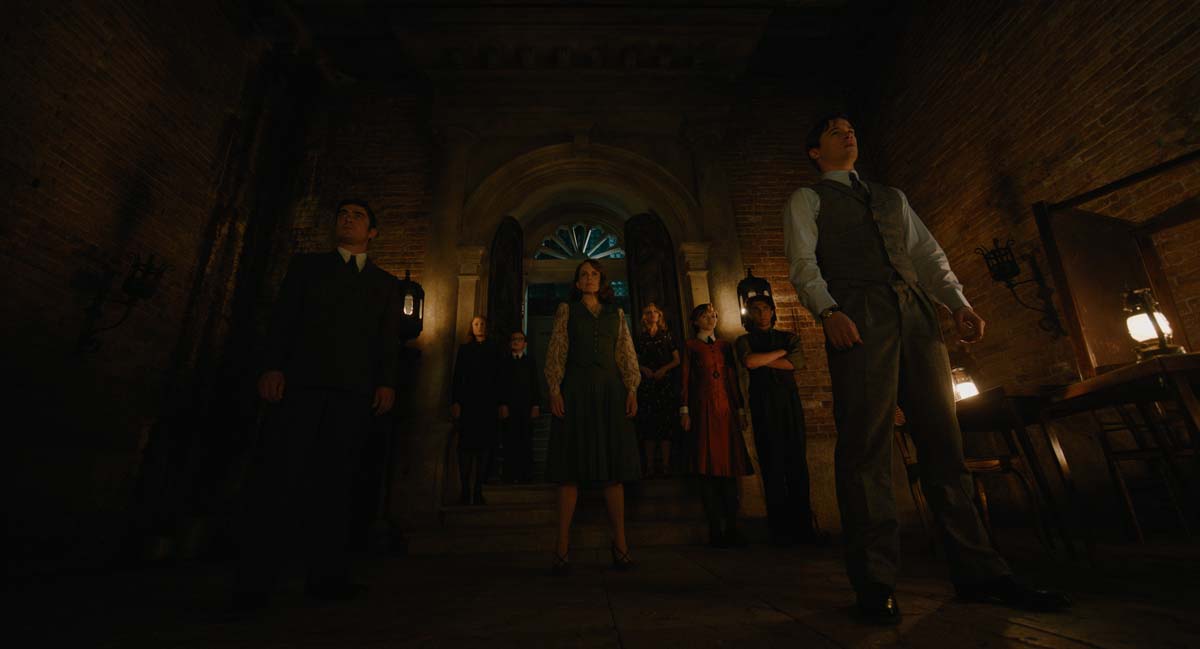 I’ve never done ScriptSync for an entire film, but I've often done it for a specific scene that's very complex. Talk about pacing out some of the quieter moments that help build the tension. How long to be in those? Often they were around Poirot thinking or feeling or wandering around the palazzo.
I’ve never done ScriptSync for an entire film, but I've often done it for a specific scene that's very complex. Talk about pacing out some of the quieter moments that help build the tension. How long to be in those? Often they were around Poirot thinking or feeling or wandering around the palazzo.
Again, they started off much longer. I'm thinking particularly of the time where he's in the cape and the the mask and we're in the piano nobile [main reception room of the Palazzo] and it's really the moment that Poirot has started to be intrigued by this house. He’s started to engage with it and he's having a bit of fun with it and listening, and it is really the sort of thing that could be as long as a piece of string. So I think originally I did a full revolution of it and him reacting as we go around the full 360. But I tend to cut — probably not unusually — a little bit looser to begin with, and then as we get towards picture lock, I did a real fine tune of cutting out frames between lines. Once we had the pace, it was very clear when certain scenes that I'd cut earlier or scenes like that, they fell out of place, so it's generally quite a fast cut film, and I think it's important to have light and dark and slower moments as well as the more active scenes, but it was really just a balance of feeling it out. I don't think there's any other way to do it that I know of.
The flip side of those quieter moments: there's a great scene where Tina Fey's character and Branagh’s character have this very fast paced discussion right after he talks to the son outside the bathroom. Can you talk about the reason for that pace, the need for that pace and how that was cut?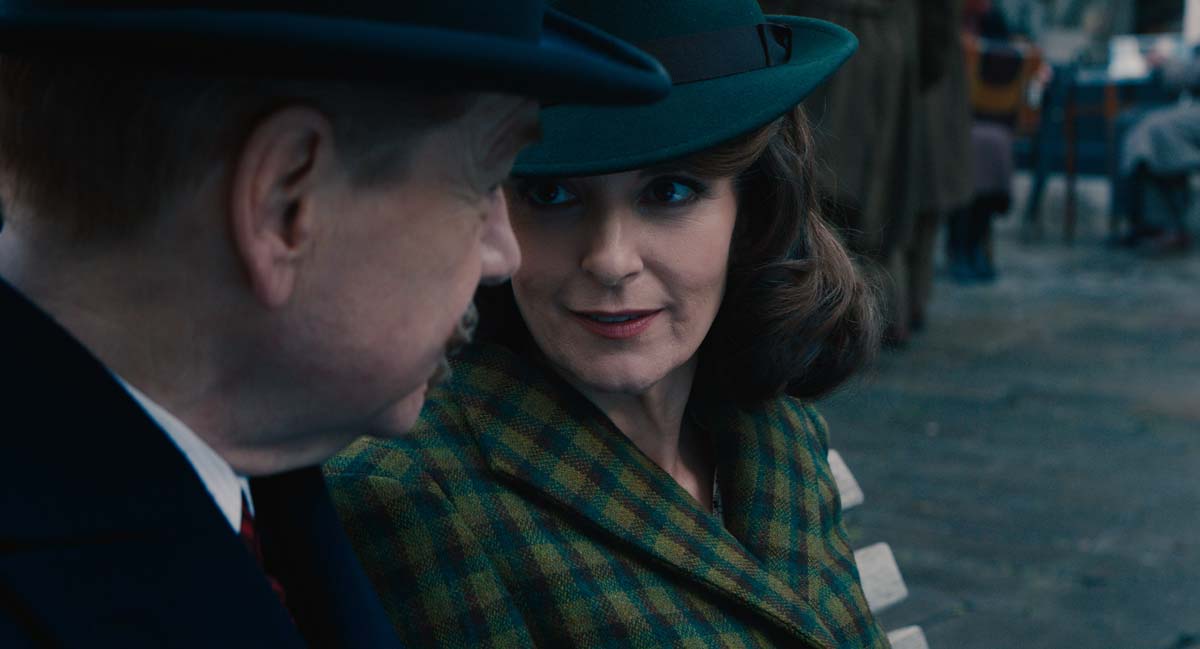
It's after two quite long, talky interviews with Olga and with Farrier. And then after the bathroom, it's another quiet-ish scene with Leopold, so that we did feel looking at it as a whole that it was time for some humor and some levity and some quick editing. And that was actually one of the scenes where I sat with Ken and we cut it together. It was quite unusual. The first version of the film that I cut, I put in all the comedy because there was a lot and there was a lot of sparky interaction between the two of them. And then we reeled it back a little bit because we were trying to get the right balance between the somber tone and the humor, and then we put some more back in. So by the end of it, we were leaning into that as being one of the moments that we did need some levity and then we go into another interrogation. So, yeah, well spotted! It was certainly something we were conscious of.
It was clear from the dailies that their chemistry was absolutely genuine. There was a longer scene when Poirot asks Ariadne to help him investigate. It was pretty flirty as well as funny, and you could really see that they were having fun in character. They both have very big egos: the characters. It was great, and I would have liked to have put all of that in, but again, it was getting the balance with the whole story.
I think it fits in with Poirot's slightly dented opinion of himself, and he has more self-doubt. And he's a bit shaky for various reasons, and he's more open — maybe we could even say “teachable.” It made for a great dynamic, and Tina is wonderful at just raising her eyebrow or sort of making sly asides, which were adlib, so that was really fun.
One of those moments that I really liked in the film was when they’re interrogating Olga and Poirot figures out that she has maybe been a nun in her past life. And when he says: “…or perhaps a convent?” There's a great reaction shot to Tina Fey as if: “how did you know that?”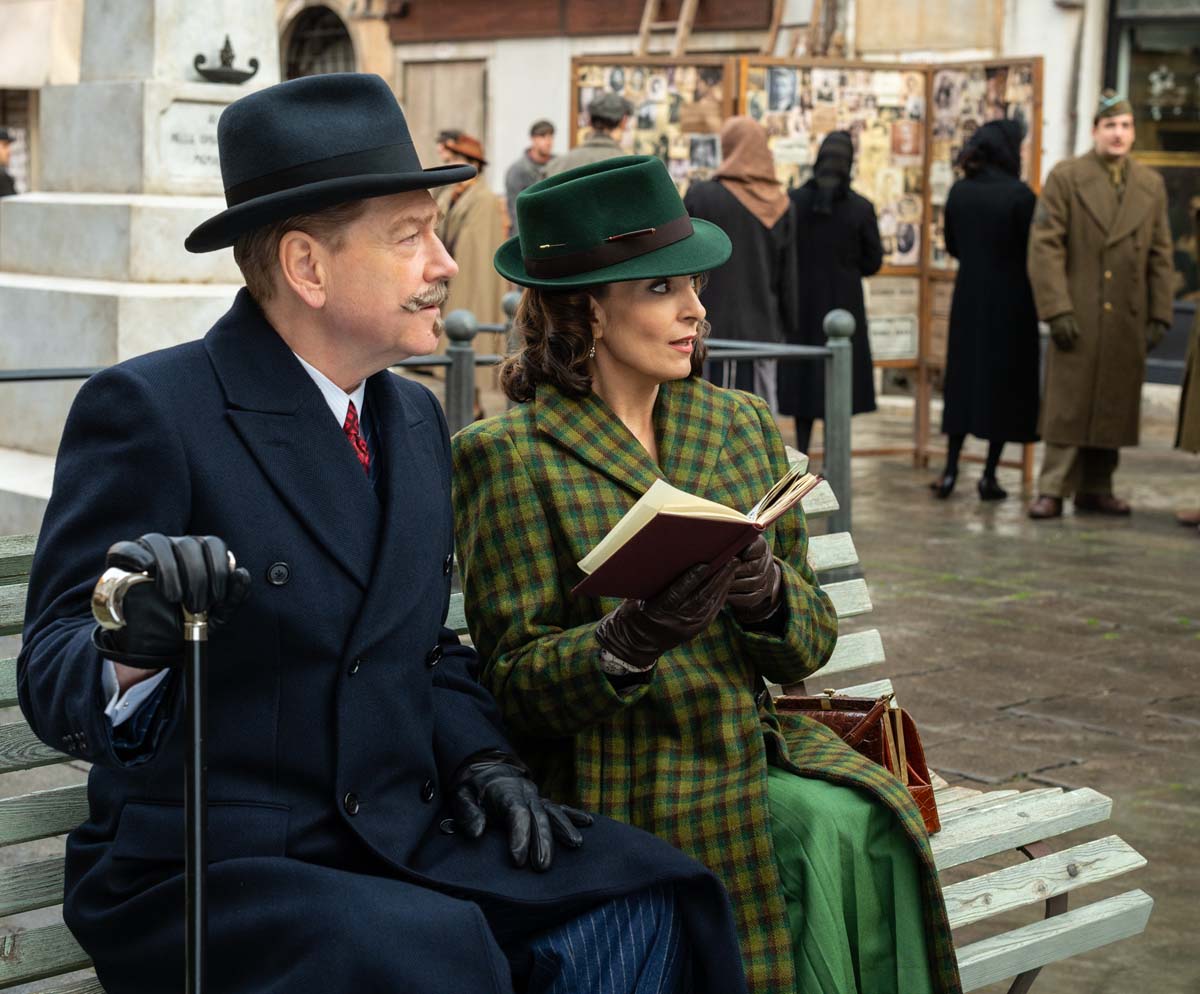
She was on fire that day. Just the way that she can move her eyes. It was just another way to pepper an interrogation, so I wasn't just ping-ponging between the two of them. She always had a good reaction to cut to. But that scene I particularly liked as well, because of the incredible production design, there were glass doors or glass walls on both sides of that kitchen. One was a door and one was just a window through. And the way the glass distorted the image was very beautiful and very much helped with building the atmosphere. So I was able to use that as much as I could. But yeah, Tina always has a good look.
Tina was having good reactions, but somebody had to choose to cut to her at that moment.Thank you.
Talk about the use of the rain and the doors kind of shivering and blowing in the wind and other things that you used sonically to enhance that atmosphere that you were in.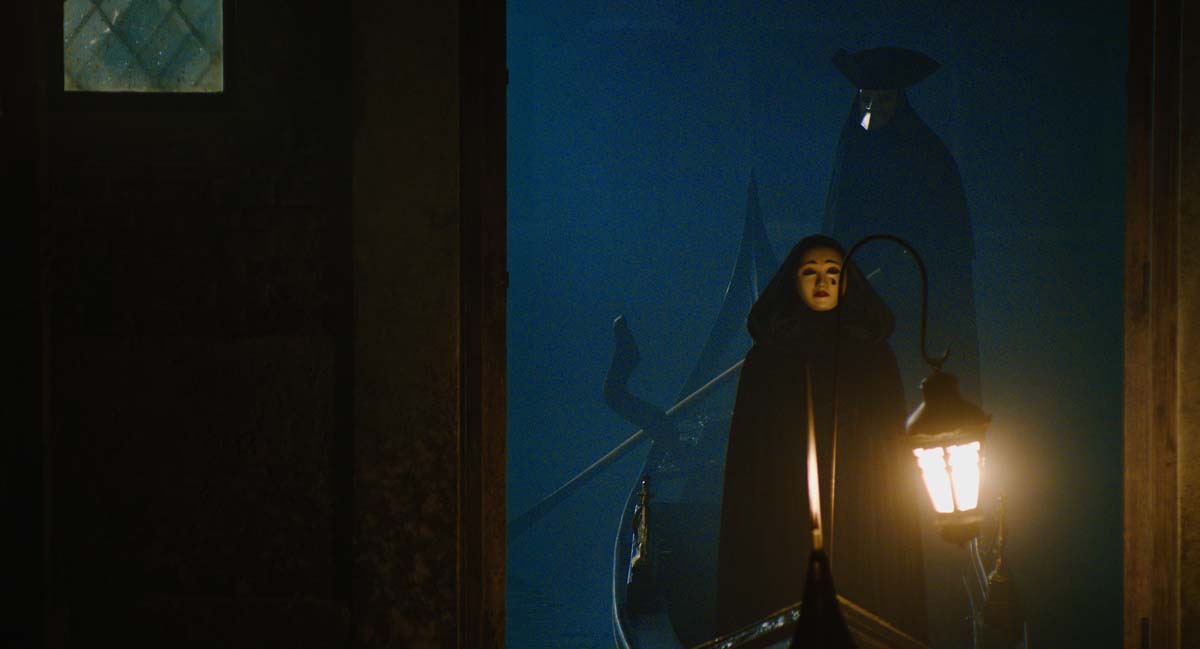
Well, we had an amazing sound team: Simon Chase, James Mather, Tomas Blazukas — all did a really great job and they were on early and they gave us some sounds that we could use really from the beginning. And again, the material just lent itself to that.
One of the things that was interesting was that Ken asked me not to cut with music for a very, very long time apart from a couple of spots, so we were able to sit with the cut as it was, and the sound design could really shine. I think there were only a couple of spots that we put temp music in and we used Hildur’s score for those, and then we waited until [composer Hildur Guonadottir] had written her cues. So it really meant that the cut and the sound work could breathe. They just did a fantastic job.
The rain obviously was very atmospheric and for my taste I would have had thunderclaps all over the place! But Ken was keen not to overdo those tropes. And hopefully we found the sweet spot of having some fun but without overdoing it. But again, it all leads into this: the house has been there longer than the humans that are currently inhabiting it. The weather itself is subsuming the house and the house is sinking. It's rotting, it's leaking, it's groaning. The electrics are dodgy. You have the feeling that anything you touch might be the last thing you ever do. Just to give it that jagged, dangerous feeling of hum, of atmosphere, of the danger that they're cut off from the outside world and reason. And I think that was one of the things that I liked a lot about this film, is putting someone like Poirot, who's so driven by logic and is such a cynic into an environment which challenges all of those things. And he's in a place where he's more vulnerable. So if he'd been swashbuckling, overconfident, Poirot, there wouldn't have been as much to play with. So I thought that was really interesting.
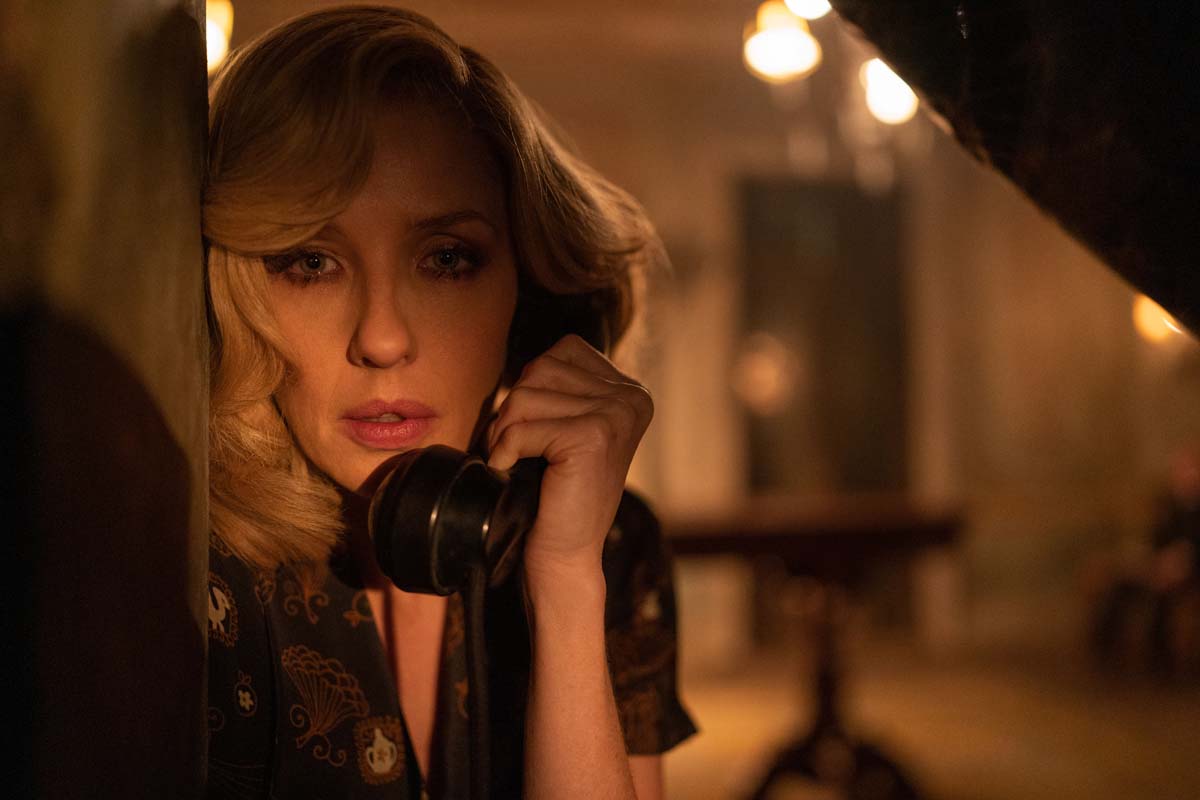 I'm assuming the interiors were shot at Pinewood. Were you nearby?
I'm assuming the interiors were shot at Pinewood. Were you nearby?
I was at Twickenham Studios, so not nearby on a Friday afternoon rush hour traffic. I did pop up there a couple of times, but mostly I was based at Twickenham. But I have to say one of the most joyful things was the sound team were at Twickenham, the visual effects team were upstairs. Ken's office was on the other side of the building and — post-pandemic — it was such a joy to work with people in person and I think it really helped how much we worked together and I think it impacted what we made together as well, because it just meant you could run up a set of stairs and ask, “What was that?” And just talk about it like humans do.
I think so many people are happy to be in person with their director for sure, even though there's advantages to the remote work. But there's definitely something that's missing.Yes. I think those moments of spontaneity and just ideas that come out of conversations are really valuable. And I'm not a fan of remote working just because of the sort of person I am. Certainly in some situations it's helpful, but there is a magic in collaborative working that happens in person.
Another one of the scenes that I wanted to talk about, it's actually two scenes: the two separate interrogations of the medium's assistants and they take place in two separate locations, but they're intercut. Were they scripted as intercut?Yes. They were scripted as intercut. And it was a really well-written scene. With each of the interrogations we tried to do something different. And Poirot has split up the siblings on purpose to have them on the back foot and then we try to reflect that in the edit. And we also had a lot of beautiful wides on both sides of the interrogation. And so Ken said to me, “Why don't you use the wides? Go to them whenever it feels right to disorient the audience in the same way that is trying to disorientating the siblings.” That was great fun. Starts off more rat-a-tat and then becomes more emotional. One of the phrases that Ken used was, “secret sadness.” For each of these characters, we find out what their secret sadness is, and hopefully that gives the film a more emotional grounding. A lot of these characters are sort of beaten up and survivors and we find out who they are as humans rather than just two-dimensional characters who are passed by.
Can you remember any of the reasons why you might not have done the intercutting as scripted? Or what is — in general — a reason why you might not follow the intercutting of the script.We didn't rearrange it majorly, but it was just things like a turn of phrase that we want split up. I think mainly what we did was cut between the two siblings more rapidly to emphasize their differing impressions of the situation. So Nicholas is very naive and Desdemona is very knowing and cynical.
I want to play for you another scene.The first thing that I remember from cutting that was when we cut to the chandelier before it falls, but just to place it in the environment because so much of that is in close up. We wanted to mark it: “there's a big chandelier with children playing” and there's also a really practical reason for that is they've walked around a corridor and they're in a different place. So we needed to go somewhere else anyway to come back to them arriving in their second positions. It was very helpful to have that chandelier brought into the consciousness of the audience, so the fall of it would have more impact.
Poirot’s mini speech about ghosts and gods: that was an area that we'd cut down further in a second or third go around. And then we ended up putting back. And I was pleased because I felt that it was worth giving him his moment of saying why he has no patience with ghosts and gods and spirits. He's seen too much of the world. And I think that was important for him to say it, even though some people could have gleaned that from the time period. But that was a moment that we put back in. And I think the writer Michael Green, was very pleased by that.
Can you talk about that delicate walk that you need to do or how you deal with a director who is also the lead actor?Yes, it's something I was very conscious of and something that I was taught at film school actually emphatically to talk about the characters by the characters names. And particularly when one of the actors is sitting in your room. Reminds me of something funny during the denoument: the long scene where Poirot unravels all the misdeeds for everyone else. There was a lot of coverage on Poirot side: different angles, different performances. We used ScriptSync as I said before. We were talking about different lines and intercutting a line for two phrases one from the other. And I said, I said, “Oh, the one with the long pause.” Branagh said, “The long pause, Lucy? I am a Shakespearean actor! Do you mean the ‘meaningful performance?’” And I think I said, “Yes. I'm very well aware of that!” We did have fun. But I was very careful not to make any comment about the performance, or if I did, it was a complimentary.
You cut “Ma,” Correct?Yes.
So that is a horror film. And this felt very, very horror-y compared to “Murder on the Orient Express” or “Death On the Nile.”I think it was particularly nice to be involved in this project because Ken was trying to do something different. So it wasn't just “a jolly old murder. Let's solve the case in a nice, cozy way,” but it had a very different striking tone. And I think that's why I was in consideration at the beginning, because I've had genre experience. I've worked at Blumhouse a lot. I cut “Ma” and “The Midnight Club,” and I'm very steeped in that genre filmmaking and also some horror comedy. So I did have some experience and it's something that I enjoy very much of playing with tone. So particularly with horror comedy, it's when are we building atmosphere and tension and when are we breaking it and relaxing and having some fun. So it's always a tightrope walk. And similarly to “Ma” which was quite different, but that had I think more of a camp to it, which I enjoyed very much. But we did want it to be unnerving at least, and intriguing and to make the story work as a whole. So yeah, it's a tone I enjoy.
I will say one more thing which I found very interesting is there's a house in Venice called Ca’Dario which has a history of each of the owners meeting an untimely death. And when they were in preproduction in Venice, locals were saying, “No, but really don't shoot there.” And they were sincerely concerned that there would be trouble if they filmed in Ca’Dario. But it's in the film. It's shown in the the gondola ride down the Grand Canal. But I really like that story that Venice is a superstitious city and there are ghosts there.

Thank you. It's that's one of my favorites as well. I’m sure it doesn't surprise you to learn that it was much longer to begin with.
After the Pinewood shoot, they all went off to Venice for a week, and we didn't know what the weather was going to be like. And the morning that they did those establishing shots was that sort of slate gray sky, and so it lent itself towards the fog that we added in visual effects. And I was just very drawn to the shots that had a graphic look about them. Looking at Saint Mark's Square in a very different way. But the incident that happens with the birds was just a gift. I mean, there was quite a lot of that material and I was watching it all and I thought, “Oh, my God!”
I thought for sure that was a special effect! Are you kidding me?It's absolutely real.
That's horrifying!.jpg)
The filmmakers may have thrown a few almonds, but that was as much manipulation as there was. So I thought, “Well, that's going in!” We ended up building that whole sequence around that. We started off with some material from outside the city and it being a sort of journey into Saint Mark's Square. But in the end we just decided to have sort of strong, bold compositions.
Yeah, the compositions are very angular and I've been to Saint Mark's Square and I never looked at it that way.So that was really what we were trying to do is to say, this is Venice, but not as you've seen it before.
Lucy, thank you so much for talking to me about this film. It was so nice to talk to you and congratulations.Thank you. Great to talk to you. It's a real honor to be invited on the podcast. Thank you so much, Steve.

